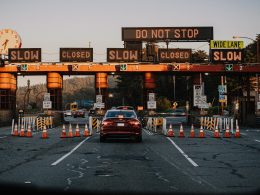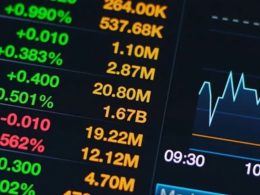by David Merkel, Aleph Blog
Today Heidi Moore interviewed me for NPR Marketplace. I won’t give away what it is about, but I will tell you two things:
- If I am on Marketplace, it will be on Friday or Tuesday.
- There was a point in the interview where she stumped me. I’m usually pretty able to think on my feet, but when she asked me “Volatilty: can you explain that in language that a teenager could understand?” I choked up, did my best on short notice, and gave what I later viewed as a lame explanation, but as I said it, my heart sank, because I realized I was not clarifying anything.
So, after the talk (It was really good to meet Heidi voice-to-voice for the first time), I took a walk outside and pondered. Then the analogy struck me, and here it is:
Imagine you are driving down a well-engineered smooth road with gradual turns, modest traffic, and no bad weather, and you are going 60 miles per hour. This is easy. There is no volatility here. That is what an average retail investor hopes for, and rarely gets.
Now consider a road that is not so smooth, with significant and frequent curves, significant traffic, and now and then it is raining hard. That is a difficult situation. This is similar to what the market is normally like, with all of the volatility (high variation of results). Maybe you can’t do 60 MPH in that environment, but something less. Those who recognize risk must run at a slower speed or risk accidents.
Now think of someone without special skills who dares to drive the easy road at 100 MPH. He might not think it so hard, and might think he is quite a driver doing so. So it was for equity investors in the ’80s and ’90s; conditions were uniquely favorable, and average investors thought they were hot stuff.
Now think of someone without special skills attempting to do the hard conditions at 100 MPH on average. Odds are they wipe out, or even die. You can’t fight physics, or can you?
Okay, now think of a highly trained driver with a special car that is able to handle the hard conditions, and can do it at 100 MPH on average, most of the time. It doesn’t work all of the time, because there are things no one can catch — extra slipperiness, a bump in a particularly bad place that leads to an overturned car.
Finally, think of the trained driver with special car told he must average 150 MPH over the hard conditions course once. He dies on the first try, destroying the car. Several other trained drivers try with identical cars. They all die, and the cars are destroyed. Eventually, you can’t get anyone to try the hard conditions course at 150 MPH.
*******
In my analogy, the difference between the hard and easy course is volatility: how rough/variable are conditions. Leverage is represented by speed. Any course can be completed, but there is a maximum speed for which a course can be completed without disaster. No surprise that those who are overly aggressive in investing frequently fail.
Now for the final tweak: imagine that you have no map for the hard course, it is new to you, no GPS, nothing to aid you in the driving. That is what the markets are like. As I often say, the markets always have a new way to make a fool out of you. How fast could you go? How fast could the trained driver with a special car go?
This is why I urge caution in investing and avoiding leverage. Investing is tough enough without trying to earn something beyond what the market can bear. I encourage safety first, after that, look for best advantage.










